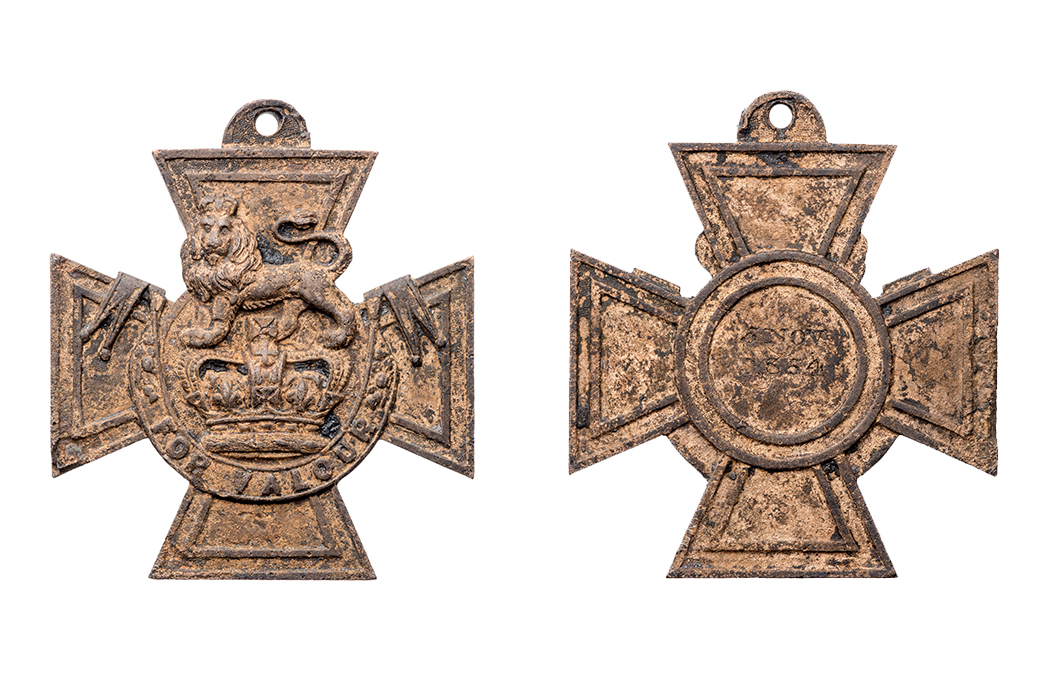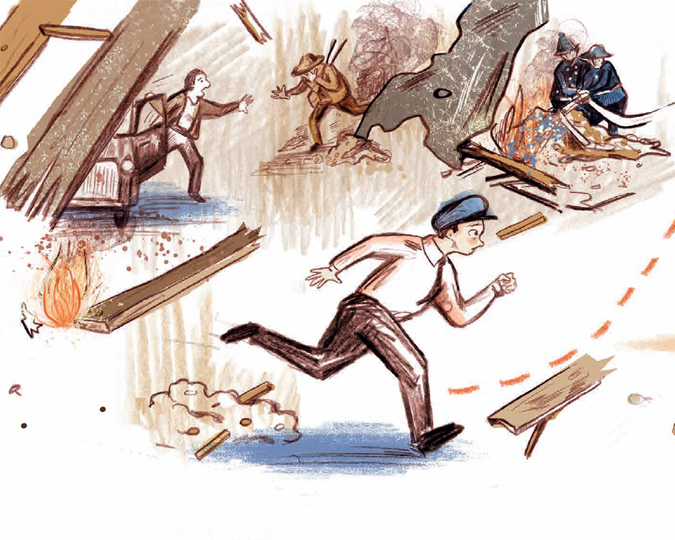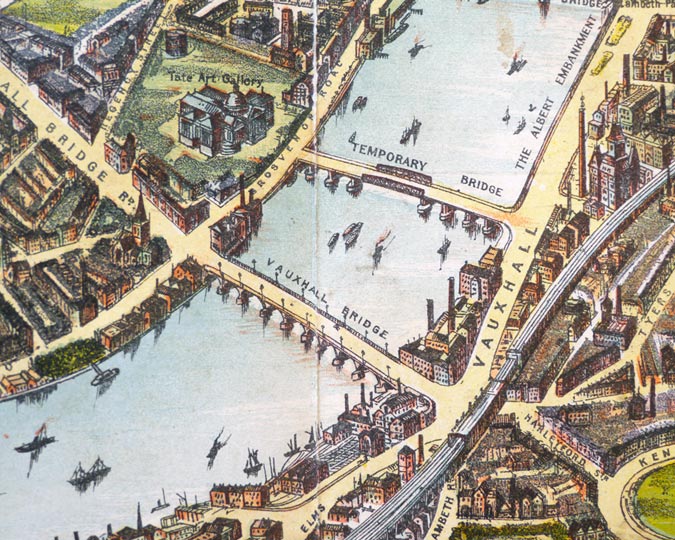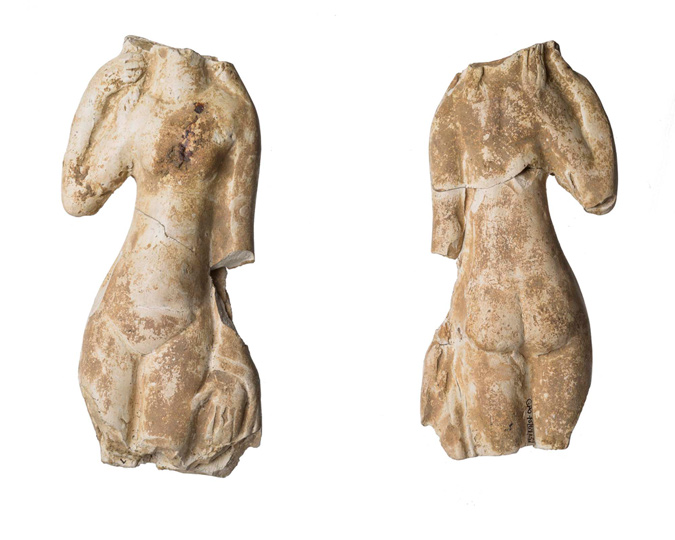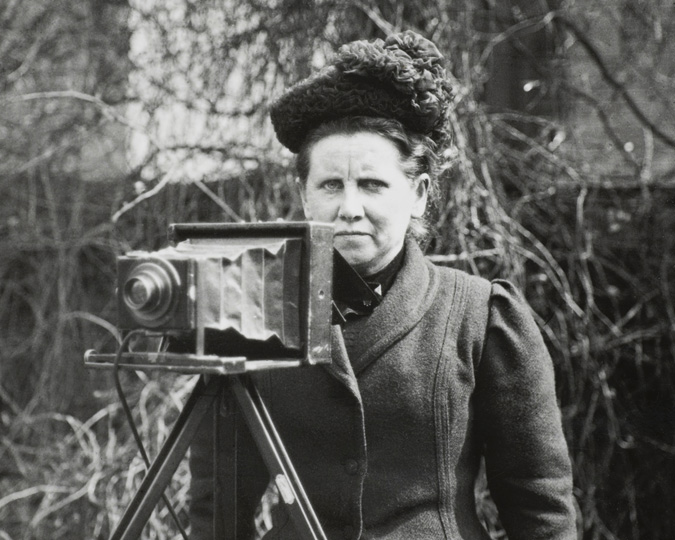A rare and prestigious Victoria Cross medal was discovered on the Thames foreshore, but who did it belong to? Kate Sumnall tries to unravel the mystery.
As a Finds Liaison Officer you never know what artefact or coin you are going to be shown next. Some of them reflect the everyday life of Londoners, others are more extraordinary, but all the finds offer a tiny viewpoint into people’s lives and the events that shape them. Last December one such discovery on the foreshore offered just that. Here is the journey of a Victoria Cross, currently on display, so far.
It all started when Tobias Neto reported that he had found what he believed to be a Victoria Cross medal. Tobias has a permit to search the foreshore and following best practice he reported the find to me for recording with the Portable Antiquities Scheme (PAS). The medal itself is bronze, cast in the shape of a cross with a suspension loop projecting from the top arm of the cross. On one side is a lion with a crown above it and the inscription ‘For Valour’. The lion represents the soldiers defending the monarch. On the reverse is the date ‘5 Nov 1854'.
Questions
Several questions surround the medal:
Is it genuine or is it a replica?
Who earned this medal?
How did it come to be in the Thames?
To attempt to find answers, in addition to searching the usual resources of museum collections, newspaper archives etc, I sought the advice of Mark Smith, Curator at Firepower: The Royal Artillery Museum, and David Callaghan, a former Director of Hancocks; the company who have made all the Victoria Crosses since their inception.
Starting with the date, 5 November 1854, we know it was awarded for actions performed at the Battle of Inkerman, one part of the Crimean War (October 1853 - March 1856). Inkerman was a strategic ridge that the British and Allies held. The Russians wanted it to help break the siege at Sebastopol. The Russians had superior numbers and guns but even against overwhelming odds the Allies held the ridge.
The Crimean War was the first time reporters were present and submitted reports. These reports outlined the extreme and desperate conditions. In response to this Queen Victoria recognised the need to reward the outstanding acts of bravery. The Victoria Cross was the first medal that was classless and could be given to any rank.
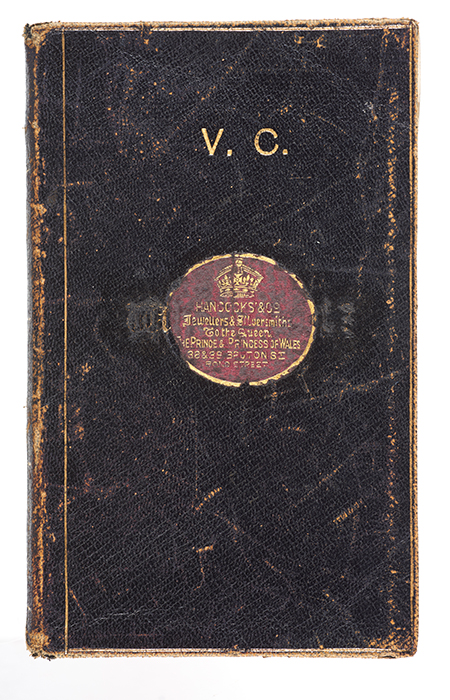
Hancocks notebook
Hancocks have made all the Victoria Crosses since their inception.
Who did it belong to?
There are lists published in various sources that detail the recipients of the Victoria Cross medals. We also have on loan from a private collection the notebook from Hancocks that lists alphabetically the recipients of the VC with key information. Most of these lists suggest 16 VCs were awarded for the Battle of Inkerman. The Hancocks notebook, however, lists the date 5th November 1854, 23 times. 7 times it is listed with other dates for an individual. If a soldier performs two VC worthy actions on different dates then the soldier receives a bar (a thin metal bar attached to the ribbon). Only three bars have been issued since the creation of the Victoria Cross medal. None of these have been for the Crimean War. However there are examples of VCs being engraved with more than one date but there is no consistent pattern for this.
There are also lists describing the locations of the Victoria Cross medals. There are two medals from the Battle of Inkerman where the locations are unknown. These belonged to Private John Byrne of the 68th (Durham) Light Infantry and Private John McDermond of the 47th (The Lancashire) Regiment. The other medals are either in public collections, such as museums, private collections or believed to be with the families. Could any of the medals in the care of families or private collections have subsequently changed hands? This is one of the unknowns.
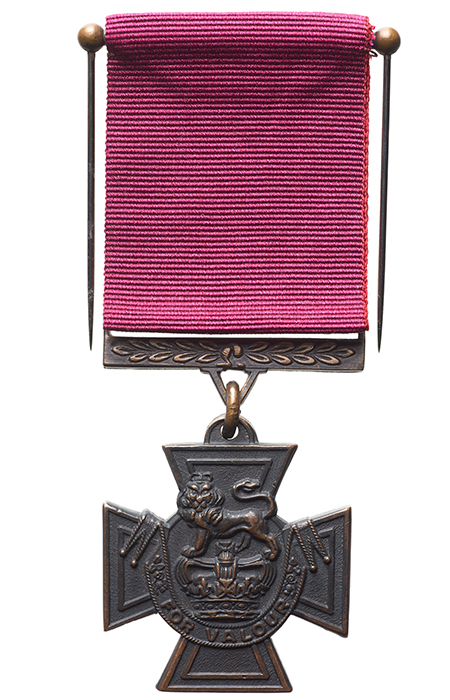
Replica Victoria Cross
Fakes may have been made to replace medals lost or stolen.
Real or replica?
I consulted with David Callaghan and asked for his expert opinion as to whether the Thames VC was authentic, or if it could be a replica. He was unable to say conclusively. Today you can buy a VC medal copy quite easily over the internet. There are any number of fakes around of varying quality and it isn’t always easy to tell the difference.
Victoria Crosses are made from ‘gunmetal’. The metal having already been cast once to form the cannon and melted down again to form the medals is of poor quality. I have been told it is not easy to work with. As such it is difficult to engrave consistently and naturally variations occur. Secondly, analysis of the metal would also be inconclusive as the tolerances are too wide. It comes down to a judgement call and quite simply, more evidence is needed.
Private John Byrne and Private John McDermond - was this VC awarded to one of these men?
Private John Byrne (1832-1879) was an Irish man with a somewhat chequered past who joined the army aged 17. Byrne was highly decorated with VC worthy actions at Inkerman and Sebastopol. So does that mean he should have more than one date on his VC? The notebook from Hancocks only lists the 5th November 1854 next to his name.
John Byrne’s story ended in tragedy when he took his own life after shooting a man who insulted the VC. What became of his possessions, his medals? Byrne earlier said that he lost all his property in a fire in Cork.
The next possibility is Private John McDermond (1832-1868). A Scottish man who joined his regiment aged 14. There is a painting currently held in Regimental Council Chamber of the Lancashire Infantry Museum that shows the action where he earned his Victoria Cross.
McDermond continued in the army until he was ‘invalided out’ due to an ankle injury. Following an illness with typhus his records are difficult to trace. The name is relatively common. A John McDermond was in a poorhouse and is buried in an unmarked grave in Paisley, just outside Glasgow. Is this our John McDermond?
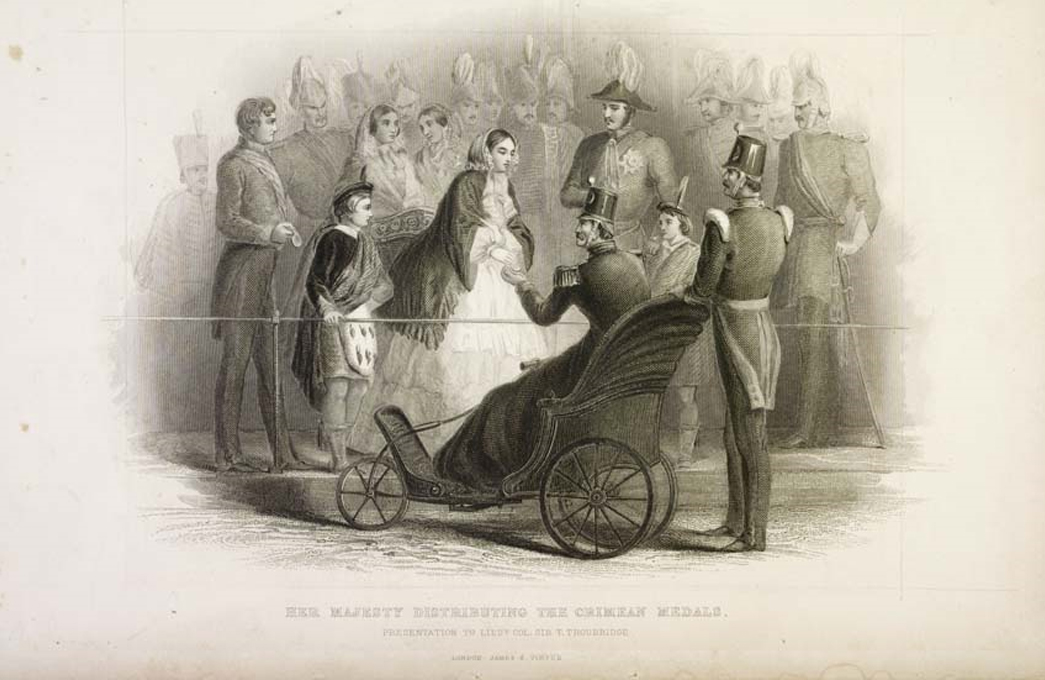
Her Majesty Distributing the Crimean Medals on 18 May 1855
Engraving, 1855-1860, ID no. Z33
The London question
How did the Thames Victoria Cross end up in the River Thames? Common explanations for how material ends up in the Thames include criminal activity or being deliberately thrown in by the owner. Or it could have been a casual loss, although this seems unlikely. If we are seriously considering John McDermond or John Byrne, when were they in London? Queen Victoria presented the Victoria Cross medals in Hyde Park in 1857. Neither John Byrne nor John McDermond were present for this investiture. McDermond received his in Southsea and Byrne was presented with his in Corfu where he was serving with his regiment.
The engraving to the right shows Queen Victoria presenting a Crimean Medal, a campaign medal received by all British military personnel, to Lieutenant Colonel Sir Thomas Trowbridge on 18 May 1855 on the Horse Guards Parade. The first Victoria Cross medals were presented to 62 men by Queen Victoria on 26 June 1857 in a similar ceremony in Hyde Park. These first medals were backdated to mark the sacrifice and bravery during the Crimean War.
Not the end of the story
As it currently stands the Thames Victoria Cross, if genuine, is an incredibly important medal. There is no higher military honour. In addition to this, this medal is one of the earliest Victoria Crosses awarded. We will continue to research this extraordinary find.
The Thames Victoria Cross was on temporary display at the Museum of London in 2016. We
have a
George Cross on permanent display at the Museum of London Docklands.
Want to get updates about the city's buried past straight to your inbox? Sign up for our Archaeology newsletter to find out about upcoming exhibitions, events and articles.








